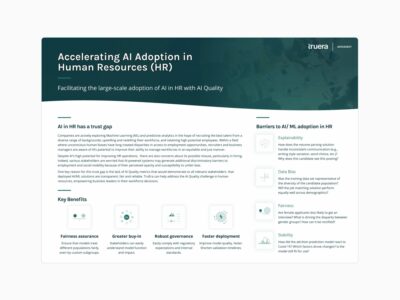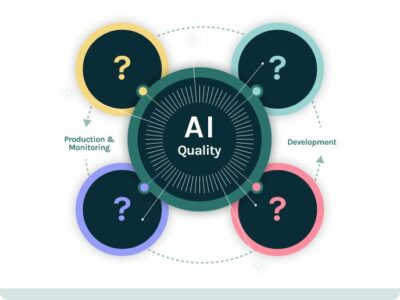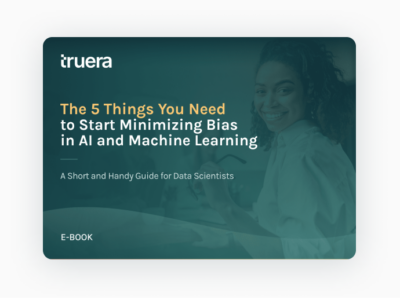Trustworthy AI in Human Resources
Accelerating AI Adoption in human resources (HR) through AI Quality.
Scaling AI in human resources is hard
AI has the potential to transform the workplace by automating high volume tasks and by improving recruitment, employee upskilling, and the retention of high-potential employees.
However, real-world adoption of AI/ML remains sub-scale in most companies. For many, AI/ML models are not considered fair, transparent, and reliable enough to meet the expectations of human resources professionals, business executives, regulators, job applicants, and employees.
Companies face a difficult choice – rush to deploy AI and risk regulatory and reputational blowback caused by poorly governed models; or limit adoption and rely exclusively on inefficient, manual approaches that might also be influenced by bias? The good news is that TruEra can help HR organizations can benefit from AI while minimizing risk, by leveraging tools and processes that make AI trustworthy.

Explainability
How does the resume parsing solution address inconsistent communication (e.g., variations of writing style, word choice, etc.)? Why does this candidate see this posting?

Data Bias
Was the training data set representative of the diversity of the candidate population? Will the job matching solution perform equally well across demographics?

Fairness
Are female applicants less likely to get an interview? What is driving the disparity between gender groups? How can it be rectified?

Stability
How did the employee attrition prediction model react to Covid 19? Which factors drove the change? Is the model still fit for use?
TruEra helps HR capture real business value from AI and ML at scale

Faster deployment

Greater buy-in
Easier for impacted stakeholders (staff, business leaders, customers) to understand and trust the models

Robust governance
Helps comply with evolving regulatory expectations and internal model and data standards
Use cases in HR
Skills-assessment-based job matching
- Explain how specific game scores are associated with particular skills and personality traits
- Help a candidate understand why a specific score led to a rejection
- Assess and improve fairness during model development
- Provide relevant documentation for regulatory audit of the model’s performance
- Provide information on how a candidate could improve their scores and thus their future chances of getting an offer for a specific role
Compensation management
- Help business executives assess if the model is enhancing workplace D&I objectives
- Explain which features are driving model decisions to investigate potential bias
- Assess and improve fairness during model development
- Provide relevant documentation for regulatory audit of the model’s performance
- Monitor the effectiveness, stability, fairness of the model over time


